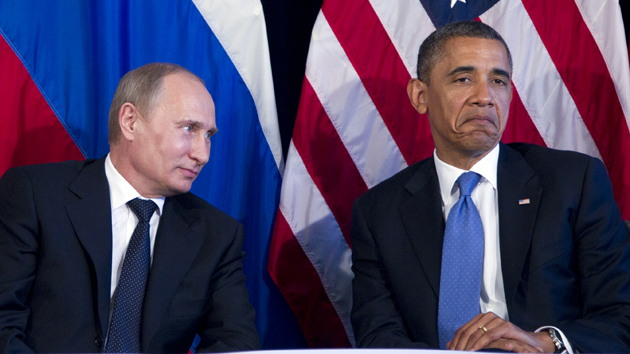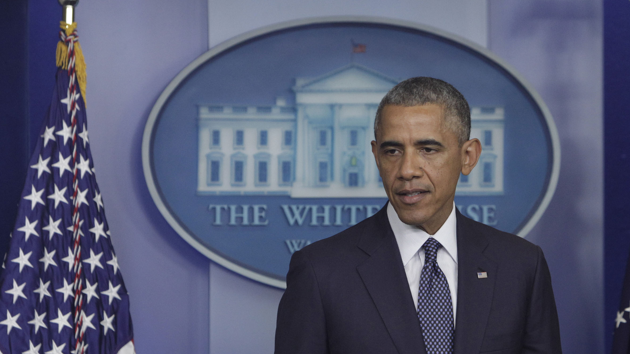
Carolyn Kaster/AP
After Ukrainian rebels used Russian missiles to shoot down a passenger airliner last month, the United States and the European Union escalated sanctions against Russia, cutting off Russian firms’ and individuals’ access to Western markets and western financing. Now Russian President Vladimir Putin is striking back—by taking aim at his people’s ability to buy Western-produced food.
On Wednesday, Putin issued a new decree warning that he plans to ban or limit imports of food products and agricultural goods from the US and the EU. Putin didn’t specify the exact products he wants to target; instead, he asked Russian government agencies to draft lists of products that should be limited or banned. (The Russian government has already reassured citizens that imports on wine and baby food are safe.)
Nevertheless, Russians and western ex-pats living in Russia are already venting their frustrations, The New Republic reports. “American whiskey, Dutch cheeses, German beer, Australian beef, Greek olives. Say bye-bye to all that,” an independent Russian TV channel tweeted. Russia imports a wide range of American food and agricultural products—$1.3 billion worth in 2013 alone. Here’s a list of some of the food and agricultural products that could be threatened by Putin’s move:
- Kale: According to the United Nation’s commodity trade database, the United States exported to Russia in 2013 about 338,266 pounds of cabbage, cauliflower, kohlrabi, and kale, both fresh and chilled, worth about $93,894.
- Whiskey: Russia bought $85 million worth of various whiskeys from the US in 2013, per the UN’s commodity trade database. “It is well known that Russians like to drink alcohol,” the US Department of Agriculture noted in a report released last year. Kentucky bourbon and Tennessee whiskey are increasingly popular in Russia, according to the report. Russia’s consumer protection agency recently announced that it was investigating Kentucky Gentleman bourbon due to fears that it contains chemicals that could produce infertility and cause cancer, and was already proceeding with plans to ban that specific brand in the country. (A spokesperson for the Sazerac Company said they had not been contacted by Russia’s Rospotrebnadzor, and had no comment at this time.)
- Fruit: Russia imports more apples and pears than any other country, according to USDA. Shipments from the US only constitute a small share of those imports—less than 1 percent of the total apple market in Russia—but that still amounted to $7.7 million worth of apples in 2012. “U.S. apples have a niche market in Russia as many consumers prefer the large and richly colored apples, which are characteristics that U.S. suppliers can normally provide,” a USDA report said.
- Almonds: In 2012, the United States supplied about 92 percent of the Russian almond market, USDA reported. In 2013, the US exported about $132 million worth of shelled almonds to Russia, according to the United Nations.
- Cows: In 2012, Russia imported 74,734 bovine animals from the United States. “Russia was the second largest market for the U.S. breeding cattle exports (30 percent of total U.S. live cattle exports) after Canada during the first 8 months of 2013,” the USDA reported.
- Cake mix: In 2013, the United States exported about 2.2 million pounds of bread, pastry, biscuit mixes and dough worth $1,191,464 to Russia, according to the United Nations.
- Soybeans: In 2013, US exported $157 million worth of soybeans to Russia.
- Caviar: In 2013, the US exported $1,014,848 worth of preserved fish, fish eggs, and caviar to Russia.
















